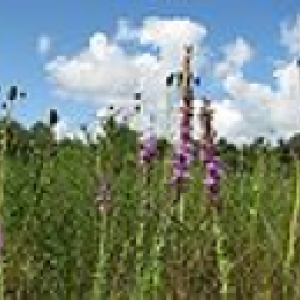
A paper published in the Journal of Applied Ecology finds that grassland plots planted with a mixture of several agricultural plant species produced a greater yield than plots planted with a single species. The EU-funded study explored whether different combinations and proportions of agricultural plants can lead to higher yields with lower input of fertilisers and more efficient use of land. Intensively managed agricultural grasslands, cultivated to provide food for livestock, have the potential to support, or damage, a range of ecosystem services, depending on how they are managed.
Conventional agriculture, in many areas, maximises yield by planting monocultures (single crops) of grasses and applying large quantities of nitrogen fertiliser. However, this approach has many associated negative environmental impacts, including biodiversity loss and pollution. As the world’s population grows, agricultural systems need to achieve high levels of productivity while minimising environmental harm. One strategy toward sustainable intensification is to better use the ability of legumes to convert atmospheric nitrogen into a form of nitrogen that can be used for plant growth and reduce reliance on chemical fertilisers.
At 31 sites (30 in Europe and one in Canada), the researchers set up 15 experimental plant communities sown as either 1.) a mixture of four types of species: a fast-establishing non-nitrogen fixing grass (such as ryegrass), a fast-establishing nitrogen-fixing legume (such as red clover), a temporally persistent non-fixing grass (e.g. cocksfoot) and a temporally persistent nitrogen-fixing legume (e.g. white clover), or 2.) monoculture (single crop) communities of each of the four species. The species were selected for combinations of two key features which complement each other and were expected to lead to higher yields: the ability to fix nitrogen (an important element for plant growth) in soil, and; the ability to establish quickly or become more dominant over time. For each plot, the researchers measured the total yield (including weeds), the yield of sown species, and the proportion of weeds, over a three-year period. Across all sites, the total yield of sown species of four-species mixtures exceeded that of the average monoculture in 98% of cases. The mixtures significantly exceeded the best monoculture at about 60% of the 31 sites. The increased average yield of the mixtures was evident in year one, persisted for the duration of the experiment, and was related to the evenness of the species in the plots. The benefit of including development over different time periods (fast-establishing or persistent), was as great as the benefit of combining grasses and legumes.
Greater yields of mixtures compared with monocultures occurred regardless of differences in soil types, soil fertility and climate. In addition, the percentage of weeds in the plots with four-species mixtures remained consistently low: 4% in year one, 3% in year two and 3% in year three. Monocultures had much higher rates of weed invasion, with the percentage of weeds increasing from 15% in year one to 32% in year three.
Citation as follows: Finn, J. A., Kirwan, L., Connolly, J., et al. (2013) Ecosystem function enhanced by combining four functional types of plant species in intensively managed grassland mixtures: a 3-year continental-scale field experiment. Journal of Applied Ecology. 50: 365-375. Doi: 10.1111/1365-2664.12041
For more about the EU Programme supporting this research see here.







Post a new comment »